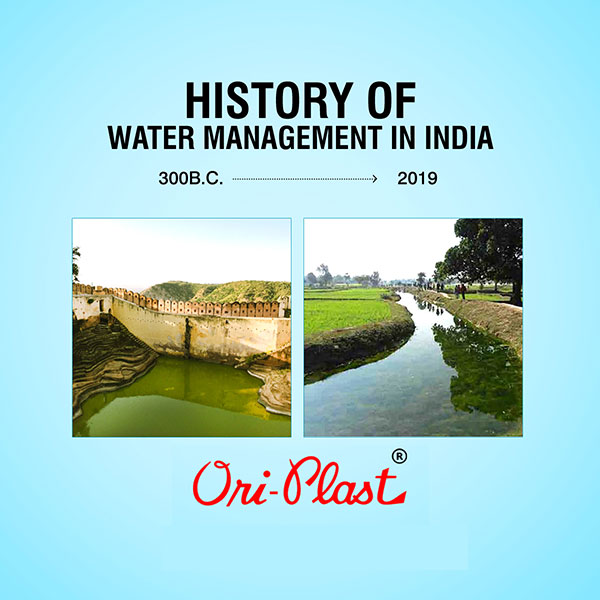The warning bells of a looming water scarcity have been tolling quite frequently in the recent years. We always thought that fresh water is abundant and in a country like India, where monsoons, rivers, and groundwater are in abundance, we should not worry at all. And then, Chennai water crisis happened and reality dawned.
The increase in warmer temperatures throughout the year has rendered many water bodies and rivers in the country in a pitiable state, the rapid urbanisation and indiscriminate drawing has lowered groundwater levels to steep depths and monsoon is at its erratic best. However, India had always been a responsible water conserving and harvesting country since the olden times. The country has expertly balanced between droughts and floods to flourish into an agricultural nation with region specific water harvesting techniques.
Right from the ancient kingdoms of India, to its colonial status and now, in modern day India, water conservation has been an important part of the country’s policies.
The Ancient India
Numerous archaeological evidences bear witness to the fact that rainwater conservation and harvesting was an important part of infrastructure details and ruling. The ruins of the Indus Valley Civilization in Lothal, Gujarat and the Grand Anicut (or Kallanai Dam) built in the 2nd century by the early Chola dynasty are some great examples.
From storage engineering to drainage pipelines, step wells, tanks, irrigation set-ups, canals and many more such ingenious constructions that work towards collecting, holding and storing of rainwater or diverting melting glaciers and river run-offs.
Baolis and Khadins of Rajasthan, Ahar Pynes of Bihar, Zing in Ladakh, Zabo of Nagaland, Kuhls in Himachal, and Panam Keni in Wayanad, are just some examples of the regionally diverse and rich history of water conservation and history in the region.
During the Colonial Era
After the advent of the British, water conservation policies also, like everything else, were in the hands of the colonial powers who had limited indigenous understanding of the country’s diverse outlook on water conservation.
First, the British extracted the responsibility of water conservation and harvesting from communities to a government body that reversed the philosophy of personal responsibility. Water therefore, was seen as a facility doled out by the powers. In terms of topography, the British carried out widespread deforestation towards encouraging the railways, coal and other mining industry which disrupted the local ground ecology supporting the rivers and monsoon of the country.
Second, the extensive canal system that was built mostly in the areas of Punjab among other states was a mixed boon. New irrigation facilities channelizing monsoon and river water favoured some farmers while others faced worsening soil quality. Although, the colonial water technologies introduced new and quicker access to water, it also brought about a decline in traditional water conservation and harvesting.
The Modern Times
Today, awareness and knowledge aides immensely in water conservation and harvesting. As the water scarcity becomes a tangible threat, the government is working on several schemes and policies, construction of massive hydraulic structures and technologically sound irrigation facilities. On the other hand, the common man with innovative industriousness is doing their best to conserve and harvest water through simple yet efficient methods. Almost all modern methods of rainwater harvesting for example, like rain barrels, rain saucers, recharge pits, bore-wells, rooftop storages, etc. all such set-ups can be effectively constructed with Ori-Plast products.
Ori-Plast, a leading manufacturer of pipes and water tanks in Kolkata, supports all rainwater harvesting methods through its quality products. The history of India is steeped with time-tested, traditional methods of water conservation that emanated from not only simple engineering techniques but also evolved from a deep understanding of the unique topography of the country. Ori-Plast salutes this spirit of water conservation and is dedicated to take this glorious tradition forward.




